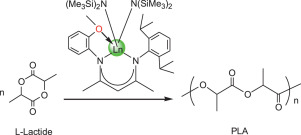
A major advancement in lanthanide chemistry has been realized with the establishment of a lanthanide–carbon triple bond for the first instance. This bond, specifically between cerium and carbon, exists within a C₈₀ fullerene cage, representing a significant milestone given the historic difficulties in isolating lanthanide–ligand multiple bonds. In the last twenty years, scientists have made impressive progress in creating complexes featuring lanthanide-ligand multiple covalent bonds, which have been uncommon due to the tendency of lanthanides toward ionic bonds. The creation of such a bond was previously deemed improbable for 4f elements due to the substantial radii of lanthanides and limited orbital overlap. Nevertheless, cerium emerged as a viable candidate because of its stability in a tetravalent oxidation state, enabling it to establish stronger covalent interactions with carbon, thereby achieving the shorter bond length required for a genuine triple bond.
Researchers utilized arc discharge with graphite rods containing metals in a helium atmosphere to generate carbon soot comprised of various metallofullerenes. CeSc₂C@C₈₀ was subsequently extracted using high-performance liquid chromatography. The molecule was analyzed through single-crystal x-ray diffraction, which revealed a cerium–carbon bond length of 1.89Å, extraordinarily short and indicative of a triple-bond character, demonstrating authentic multiple bonding rather than ionic interaction. X-ray diffraction further confirmed the linear geometry of the cerium–carbon unit inside the cage. Following quantum computational analysis validated the bond length and electronic structure identified in the experiments.
The research highlights the vital role of the fullerene as a protective nano-container, stabilizing bonding that is generally unattainable in standard compounds. The C₈₀ cage shields the cluster from air, moisture, and self-reaction while maintaining its bonding integrity. This finding expands the uses of fullerenes in stabilizing atypical bonding motifs, presenting innovative opportunities to investigate rare covalent interactions in f-block chemistry.
Looking ahead, researchers aim to explore additional lanthanide–carbon triple bonds using similar techniques to uncover f-block trends. This study not only contests traditional perspectives on lanthanide bonding but also paves the way for new paths in synthetic f-block chemistry and the investigation of extreme bonding situations.